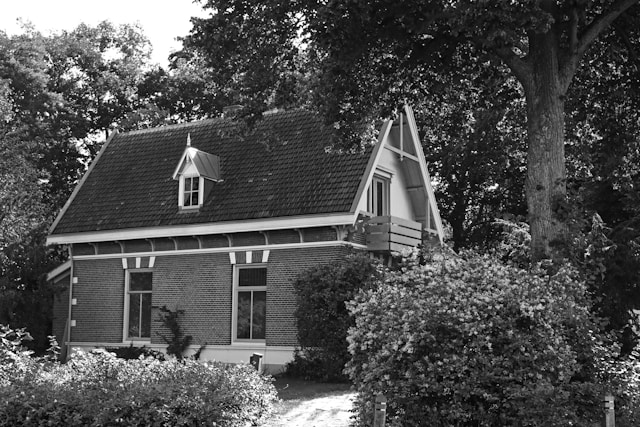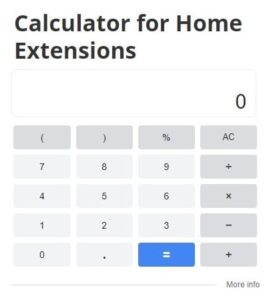
A heritage home extension isn’t as challenging a task as people make it out to be. Of course, it is a place with historical significance. You might require some permits from the councils, but that’s all it is. There are many misconceptions about heritage home extension.
So, let’s look at what it’s about and how you can get the best home extension costs for a heritage home.
Briefly Understanding Heritage Home
A Heritage Home in Australia could cover a wide range of buildings. In simple words, it is a building recognised by the local, territorial, or state government as a building with historical or cultural significance. Basically, they want to preserve it for future generations.
A legally categorised heritage home would be either on the Heritage Schedule or Register of your city’s council. It could also be on the National Heritage or State Heritage Register.
How Much Does An Extension Cost For A Heritage Home?
A heritage house extension costs anywhere between 1.5 to 2 times the typical home extension if you plan on working with the interiors and such. However, it is ideal for preserving the front side of the heritage home.
If you want to do the backside extensions or extensions in the land connected to it, the cost will be equivalent to the typical home extension costs. Ergo, you could go ahead and use the home extensions costs calculator to get a vague idea about your expenses.
How Do I Estimate The Cost Of An Extension?
It comes down to what you plan on doing. If it is renovation extension costs, you’d know heritage sites can cost a fortune. There is a lack of resources, the same material, quality and more. You can work on heritage restoration, and even the government could help you out with the cut-out discounts. However, it is not feasible.
Meanwhile, if you go for the typical extension costs per square metre for the backside of the house, you can use the same method as the standard house:
- You will have to get the formalities from permissions to engineering evaluation and architect advice.
- In some cases, you might have to hire a heritage architect. They might cost just a little bit extra. The same could apply to hiring heritage engineers.
- You will work around the plans with them
What Is The Cheapest Way To Extend Your Heritage Home?
Go with the backside extension and renovations. That is the cheapest way of all. As long as you don’t damage the heritage building, the frontal appearance, and other cultural significance, it is all good. That’s why back-end constructions are among the best options for a heritage home extension.
- Getting a back-hand extension or a complete home construction connected to a heritage home is the most affordable method.
- You can also extend a room or renovate some useless rooms into washrooms, like some storage rooms and such.
- Depending on the structure’s condition, you could get a permit for a double story extension. Typically, these will be the most costly, as double story extension costs twice as much as the ground floor extension.
So, the cheapest way to extend a heritage home is ground-level, basic room extension on the backside. Talk to the experts, like Cameron Construction, to get further
How Much Does A House Extension Cost In Australia?
Heritage Home Extension Ideas Australia
In most cases, once you own the heritage home, you can have complete control over the extension and renovations. However, these tips can help you augment the value of your house further:
- First, hire a specialist, like the Heritage Architect, to tell you about the speciality of your heritage home. It is also a good idea to hire these professionals before purchasing a heritage home.
- Learn about what characteristics and features make it valuable and worth preserving. Work on maintaining or enhancing these aspects.
- Always make sure that the extension is subservient to the main heritage home. It shouldn’t be in the building, as that can lead to many issues and unwanted costs.
- The best way is to go for modern constructions, interiors, and simple ideas. Avoid trying to blend the new extension with the heritage home’s build. That will end up costing you a fortune. So, don’t try to blend. Stand out.
- If you can find materials similar to heritage homes easily, great. Otherwise, go for the economic alternatives.
- As stated, don’t try to blend the old with the new. Let the new extension or interior stand out. A clear distinction will maintain the home’s value.
Will Home Extension Decline Heritage Home’s Value?
As long as you keep the two separate, it shouldn’t impact the home’s value. If anything, it can increase the overall cost and value of the heritage home. After all, you are occupying more land and creating a place worth living.
In most cases, adding an ensuite, like bathrooms, to small storage spaces can further augment the place’s value. Paying attention to plumbing, wiring and such would also help maintain and upkeep the value.
Apart from extensions, if you can invest in the maintenance, repairs, and improvements for the heritage home, it will further add to the overall value.
Adding A Room To A Heritage Home Average Cost Australia
So, you can go ahead and use the home extension calculator to determine the cost. In most cases, it will cost you around the same if you stick to the guidelines above. At best, it will cost you 10%-20% extra with all the added formalities for approvals and such.
The Bottom Line For Heritage Home Extension Costs
You need to ask yourself why you own a heritage home or why you bought one? There are several reasons for wanting to stand out by living in a timeless classic. Owning a heritage home comes with its perks and drawbacks. Once you understand them, such as the heritage home extension costs, things will get easy for you.
Don’t let any contractor, builder, engineer, or architect fool you. It won’t cost a fortune to extend a home if you stick to the guidelines and tips given above. So go ahead and have your heritage home extension with trusted professionals.








